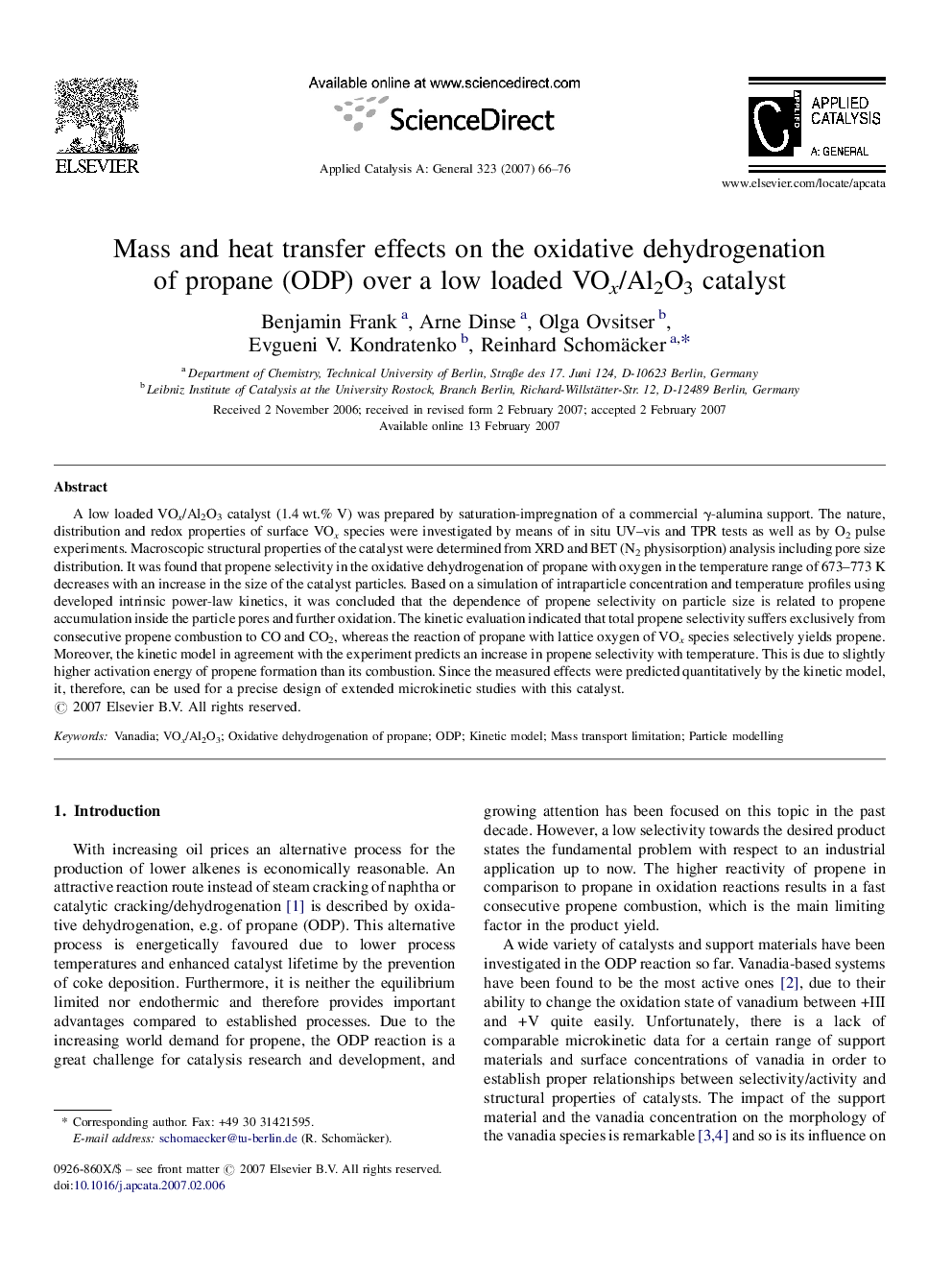| کد مقاله | کد نشریه | سال انتشار | مقاله انگلیسی | نسخه تمام متن |
|---|---|---|---|---|
| 43609 | 45979 | 2007 | 11 صفحه PDF | دانلود رایگان |

A low loaded VOx/Al2O3 catalyst (1.4 wt.% V) was prepared by saturation-impregnation of a commercial γ-alumina support. The nature, distribution and redox properties of surface VOx species were investigated by means of in situ UV–vis and TPR tests as well as by O2 pulse experiments. Macroscopic structural properties of the catalyst were determined from XRD and BET (N2 physisorption) analysis including pore size distribution. It was found that propene selectivity in the oxidative dehydrogenation of propane with oxygen in the temperature range of 673–773 K decreases with an increase in the size of the catalyst particles. Based on a simulation of intraparticle concentration and temperature profiles using developed intrinsic power-law kinetics, it was concluded that the dependence of propene selectivity on particle size is related to propene accumulation inside the particle pores and further oxidation. The kinetic evaluation indicated that total propene selectivity suffers exclusively from consecutive propene combustion to CO and CO2, whereas the reaction of propane with lattice oxygen of VOx species selectively yields propene. Moreover, the kinetic model in agreement with the experiment predicts an increase in propene selectivity with temperature. This is due to slightly higher activation energy of propene formation than its combustion. Since the measured effects were predicted quantitatively by the kinetic model, it, therefore, can be used for a precise design of extended microkinetic studies with this catalyst.
A low loaded VOx/Al2O3 catalyst (1.4 wt.% V) was prepared by saturation-impregnation of a commercial γ-alumina support. The nature, distribution and redox properties of surface VOx species were investigated by means of in situ UV–vis and TPR tests as well as by O2 pulse experiments. Macroscopic structural properties of the catalyst were determined from XRD and BET (N2 physisorption) analysis including pore size distribution. It was found that propene selectivity in the oxidative dehydrogenation of propane with oxygen in the temperature range of 673–773 K decreases with an increase in the size of the catalyst particles. Based on a simulation of intraparticle concentration and temperature profiles using developed intrinsic power-law kinetics, it was concluded that the dependence of propene selectivity on particle size is related to propene accumulation inside the particle pores and further oxidation. The kinetic evaluation indicated, that total propene selectivity suffers exclusively from consecutive propene combustion to CO and CO2, whereas the reaction of propane with lattice oxygen of VOx species selectively yields propene. Moreover, the kinetic model in agreement with the experiment predicts an increase in propene selectivity with temperature. This is due to slightly higher activation energy of the ODP reaction compared to propene combustion. Since the measured effects were predicted quantitatively by the kinetic model, it, therefore, can be used for a precise design of extended microkinetic studies with this catalyst. Figure optionsDownload as PowerPoint slide
Journal: Applied Catalysis A: General - Volume 323, 30 April 2007, Pages 66–76